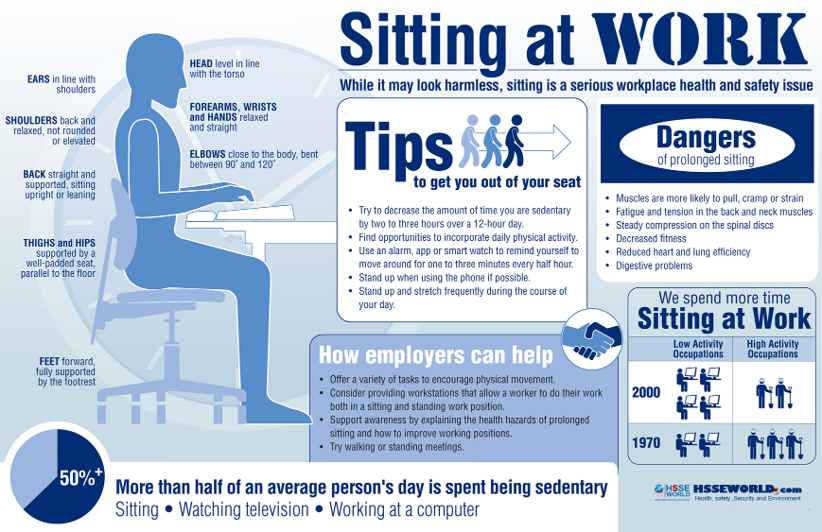Mental health in the workplace is a difficult concept for many to embrace. Research continues to demonstrate the critical links between mental health and safe, productive work. Yet sadly, news stories abound with incidences of workplace violence, accidents, and suicide based in large part on mental health going unaddressed.
The challenges to understanding and promoting workplace mental health come in different forms. For a start, mental health issues can be invisible. Unlike a broken leg, employees can come to work and appear to function relatively normally while their problems churn internally. The “bad apple” syndrome can also dissuade management from pursuing programs in this area – once a story of an employee who abuses the system by faking an illness for personal gain goes viral, the credibility of health programs can quickly and unfairly erode.

Takeaway: Mental health issues are rarely as obvious as physical injuries, but companies still need to take them seriously.
And let’s not forget money. Many companies are reluctant to spend on internal programs of any sort. These programs are seen by detractors as additional costs which impact profit margins. Public sector companies may feel the same pressure in terms of spending taxpayer funds on internal “luxuries.”
Some people also believe that managing mental health issues is not the business of an employer – it’s a personal thing. When an employee sustains a physical injury on company property, it’s easy to connect the injury to the workplace. The causes of mental health issues are often less distinct. Employees who suffer mental health problems may also be reluctant to come forward for fear of losing their job or advancement opportunities.
Mental Health Is a Company Concern
The truth, however, is that mental health is a company concern. And the trend is starting to turn. In some degree thanks to social media, people are having open conversations about their workplace lives. Corporate decision-makers are starting to notice how much of an impact mental health has on employees, and in turn, how much impact a company can have on its employees’ mental health.
We see plenty of case studies and lists of “best places to work,” which, far from being sponsored vanity pieces, demonstrate the priorities that employees of all ages hold most dear in terms of working conditions. High salaries seldom end up at the top of these lists. The highest priorities are always related to the workplace culture: respectful, safe, compassionate and proactive workspaces that allow people to feel fulfilled and to receive assistance in areas like mental health, where they may have previously been suffering in silence.
These priorities are not to be taken lightly, since employees of every age request and require such support. Rather than seeing them merely as a cost, many decision-makers are seeing mental health support programs as an investment that will help them attract and retain motivated, productive employees. For resources and products that can support mental health, visit amazon.com.
The Canadian office of KPMG LLP recently appointed its first chief mental health officer who is tasked with “supporting and embedding the firm’s mental health strategy and developing a national network of mental health champions.” German-headquartered BASF is regularly recognized for programs and feedback initiatives that promote health and wellness and safety cultures in its offices and factories around the world. These are just a couple of examples, but they’re emblematic of a greater trend.
Promoting Mental Health in the Workplace
There are many companies worldwide who are already promoting workplace mental health programs. There certainly too many to list in a single blog post, and that is a great collective achievement. However, there is still some way to go.
The successful case studies still constitute a minority of employers. Some may still be in outright denial and will wait until occupational health and safety statutes force their hand. But other companies are already interested in learning more about the best ways to integrate mental health programs and awareness into their culture. Change often comes slowly, but slow and steady eventually wins.
Some steps for successful deployment include:
- Recognizing the importance of work-life balance as a vital component of productivity. People cannot be “on” 24/7.
- Being willing to discuss and confront workplace mental health issues – bringing them out in the open in a supportive way that removes stigma and seeks solutions.
- Screening policies. Looking for examples of bullying, physical or mental abuse, stress-inducing workloads, and toxic culture. Conducting a hazard analysis just as would be done for physical safety issues.
- Providing employee assistance (EAP) benefits that match today’s workforce. Skills upgrading, change management, parental leaves, gender issues – these are just a few of the many employee related concerns that have changed substantially over the past decade.
- Tangibly supporting employees in their mental health. Allowing and encouraging personal mental health days. Being vigilant in looking for signs of stress and conflict through “management by walking around” (MBWA), video-based mentoring, and timelier two-way employee feedback.
- Including all levels. Although specialists should spearhead a mental health initiative, the endorsement of senior management goes a long way to delivering confidence and legitimacy. This includes physical participation of senior officers and executives, for example in serving breakfasts on employee appreciation days – a small but powerful and symbolic gesture.
- Reducing the stigma. Workplace mental health is deep and complicated. Some problems stem from personal clinical illness, others are products of a workplace culture. To address it, management must be willing to bring it out in the open without creating fear.
- Prioritizing confidentiality. Although bringing concepts of workplace mental health out into the open is advisable, there is also the critical importance of respecting confidentiality for each employee.
- Making workplace mental health a constant part of the culture. Employee Appreciation Days are good to have as distinct events, but the proactive support of employees’ mental health must remain a permanent part of a company’s culture, and one that is carefully planned, measured, and improved upon.
These ideas, and many more besides, are available from a range of sources, including occupational health and safety statutes, human resource guides, mental health practitioners, and resources on social and traditional media. They apply to any type of workplace, from the office to the factory floor, from those who work from home to road warriors, and from full-timers to part-time and contract workers.
The issue of workplace has finally come out into the open where it belongs, for the benefit of individual people, as well as the companies they work for.



